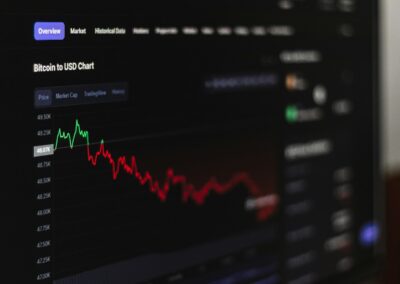Reshaping the Lending Landscape with Peer-to-Peer Platforms
The Emergence of Peer-to-Peer Lending
The influence of peer-to-peer lending platforms like LendingClub and Funding Circle has dramatically reshaped the lending landscape by connecting borrowers directly with investors. This innovative approach to finance bypasses traditional banking institutions, offering a more streamlined and accessible way for individuals and businesses to secure funding. In regions like Saudi Arabia and the UAE, where technological advancements are rapidly transforming the financial sector, peer-to-peer (P2P) lending has emerged as a vital component of the fintech revolution.
P2P lending platforms operate by matching borrowers with investors through an online marketplace. Borrowers can apply for loans by providing information about their financial situation and funding needs, while investors can browse these loan applications and choose to fund those that meet their criteria. This direct connection reduces the intermediaries involved in the lending process, often resulting in lower interest rates for borrowers and higher returns for investors.
In Saudi Arabia, the adoption of P2P lending is being driven by initiatives such as the Financial Sector Development Program, which aims to enhance the efficiency and inclusivity of the financial system. Similarly, in the UAE, the Dubai International Financial Centre (DIFC) is fostering the growth of fintech, including P2P lending, as part of its strategy to position Dubai as a global financial hub. These efforts are paving the way for P2P lending to become a mainstream financial service in the region.
Benefits of Peer-to-Peer Lending
One of the primary benefits of P2P lending is the increased accessibility it offers to both borrowers and investors. Traditional banking systems often have stringent lending criteria that can exclude many potential borrowers, especially small businesses and individuals with less-than-perfect credit scores. P2P platforms, however, provide an alternative source of funding that is more flexible and inclusive.
For investors, P2P lending presents an opportunity to diversify their investment portfolios and achieve higher returns. By funding loans directly, investors can spread their risk across multiple borrowers, reducing the impact of any single default. Additionally, P2P platforms often provide detailed information about each loan, allowing investors to make informed decisions based on the borrower’s creditworthiness and loan purpose.
In the UAE, P2P lending is helping to address the funding gap for small and medium-sized enterprises (SMEs), which are a critical component of the country’s economy. By providing an alternative source of capital, P2P platforms are enabling SMEs to access the funding they need to grow and thrive. In Saudi Arabia, P2P lending is supporting the Vision 2030 goals of economic diversification and financial inclusion by providing more opportunities for individuals and businesses to access credit.
Challenges and Risks of P2P Lending
Despite its many benefits, P2P lending also presents certain challenges and risks that need to be managed. One of the primary concerns is the risk of default, as P2P loans are typically unsecured and rely on the borrower’s ability to repay. While P2P platforms use various methods to assess and mitigate this risk, such as credit scoring and diversification strategies, there is always the potential for losses.
Another challenge is the regulatory environment. P2P lending operates in a rapidly evolving regulatory landscape, and platforms must navigate complex legal and compliance requirements. In the UAE, the Securities and Commodities Authority (SCA) has introduced regulations to govern P2P lending, ensuring that platforms operate transparently and protect the interests of both borrowers and investors. Saudi Arabia is also developing a regulatory framework to support the growth of fintech and ensure the stability of the financial system.
Moreover, P2P lending platforms must maintain robust cybersecurity measures to protect sensitive financial data and prevent fraud. As with any online financial service, the risk of cyberattacks is a significant concern, and platforms must invest in advanced security technologies to safeguard their users’ information.
The Future of Peer-to-Peer Lending in the Financial Sector
Technological Innovations Driving Growth
The future of P2P lending is closely tied to ongoing technological innovations. Advances in artificial intelligence (AI) and machine learning are enhancing the ability of P2P platforms to assess credit risk and identify potential borrowers. By analyzing vast amounts of data, these technologies can provide more accurate and predictive insights, improving the overall efficiency and reliability of the lending process.
Blockchain technology is also poised to play a significant role in the evolution of P2P lending. By providing a decentralized and secure ledger for recording transactions, blockchain can enhance the transparency and trustworthiness of P2P platforms. This technology can streamline the loan origination process, reduce the risk of fraud, and ensure that all parties have access to reliable and tamper-proof records.
In Dubai, fintech companies are at the forefront of integrating these technologies into their P2P lending platforms. The Dubai Future Accelerators program, for instance, supports startups that are developing innovative financial solutions, including those that leverage AI and blockchain. Similarly, Saudi Arabia’s fintech ecosystem is rapidly evolving, with new companies emerging that are utilizing advanced technologies to enhance P2P lending services.
Enhancing Financial Inclusion and Economic Growth
P2P lending has the potential to significantly enhance financial inclusion by providing access to credit for underserved populations. In regions like Saudi Arabia and the UAE, where traditional banking services may not reach all segments of the population, P2P platforms offer an alternative means of accessing financial resources. This inclusivity can drive economic growth by empowering more individuals and businesses to participate in the economy.
For example, in rural areas or among low-income communities, P2P lending can provide much-needed funding for entrepreneurial ventures and small businesses. By facilitating access to capital, these platforms can help stimulate local economies and create job opportunities. This aligns with the broader economic development goals of both Saudi Arabia and the UAE, which are focused on fostering innovation and supporting SMEs.
Moreover, P2P lending can support the diversification of the economy by funding a wider range of industries and sectors. Traditional banks may prioritize larger, more established businesses, but P2P platforms can cater to niche markets and emerging industries. This flexibility allows for a more dynamic and resilient economy, capable of adapting to changing market conditions.
Strategic Partnerships and Collaborative Opportunities
The growth of P2P lending also presents opportunities for strategic partnerships and collaborations. Traditional financial institutions can partner with P2P platforms to expand their reach and offer new services. By leveraging the strengths of both sectors, these partnerships can enhance the overall financial ecosystem and provide better services to consumers.
In the UAE, banks are increasingly collaborating with fintech startups to integrate P2P lending into their product offerings. These partnerships allow banks to tap into the innovative capabilities of fintech companies while providing the regulatory and financial stability that traditional institutions offer. Saudi Arabia is also witnessing similar collaborations, with banks and fintech firms working together to promote financial innovation and inclusion.
Furthermore, P2P lending platforms can collaborate with government agencies and development organizations to address specific funding needs. For instance, platforms can work with economic development programs to provide targeted funding for sectors such as agriculture, education, and healthcare. These collaborations can help align P2P lending with national development priorities and maximize its impact on economic growth.
Conclusion
In conclusion, the influence of peer-to-peer lending platforms on the financial landscape is profound, offering new opportunities for borrowers and investors while promoting financial inclusion and economic growth. In Saudi Arabia and the UAE, the adoption of P2P lending is supported by strategic initiatives and technological advancements, positioning these regions as leaders in the fintech revolution. As P2P lending continues to evolve, it will play an increasingly important role in shaping the future of finance, providing innovative solutions that meet the diverse needs of consumers and businesses. By embracing the potential of P2P lending, we can create a more inclusive, efficient, and resilient financial system that drives sustainable economic development.
—
#PeerToPeerLending #FinancialTechnology #DigitalLending #ModernTechnology #UAEFintech #SaudiArabiaInnovation #BusinessSuccess























